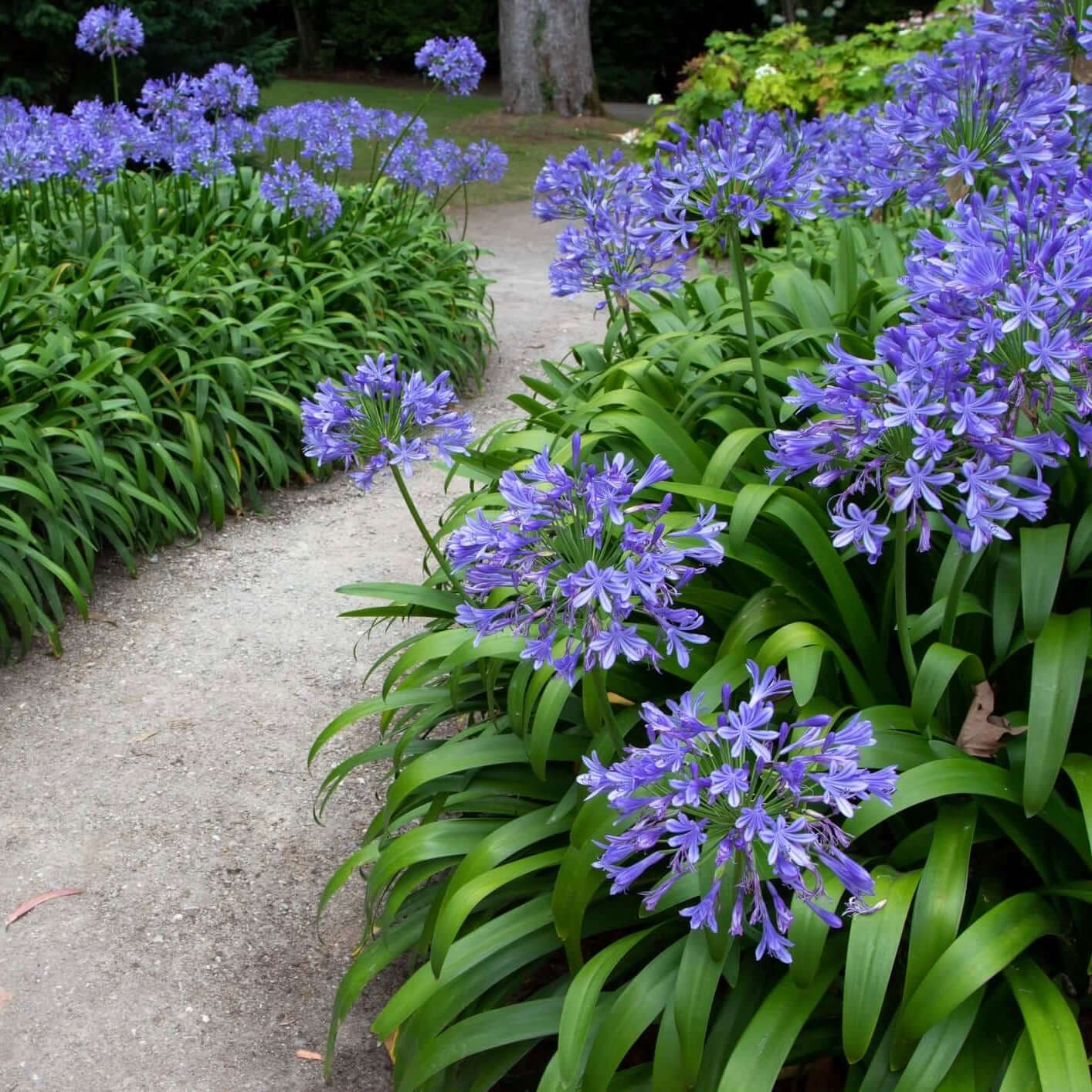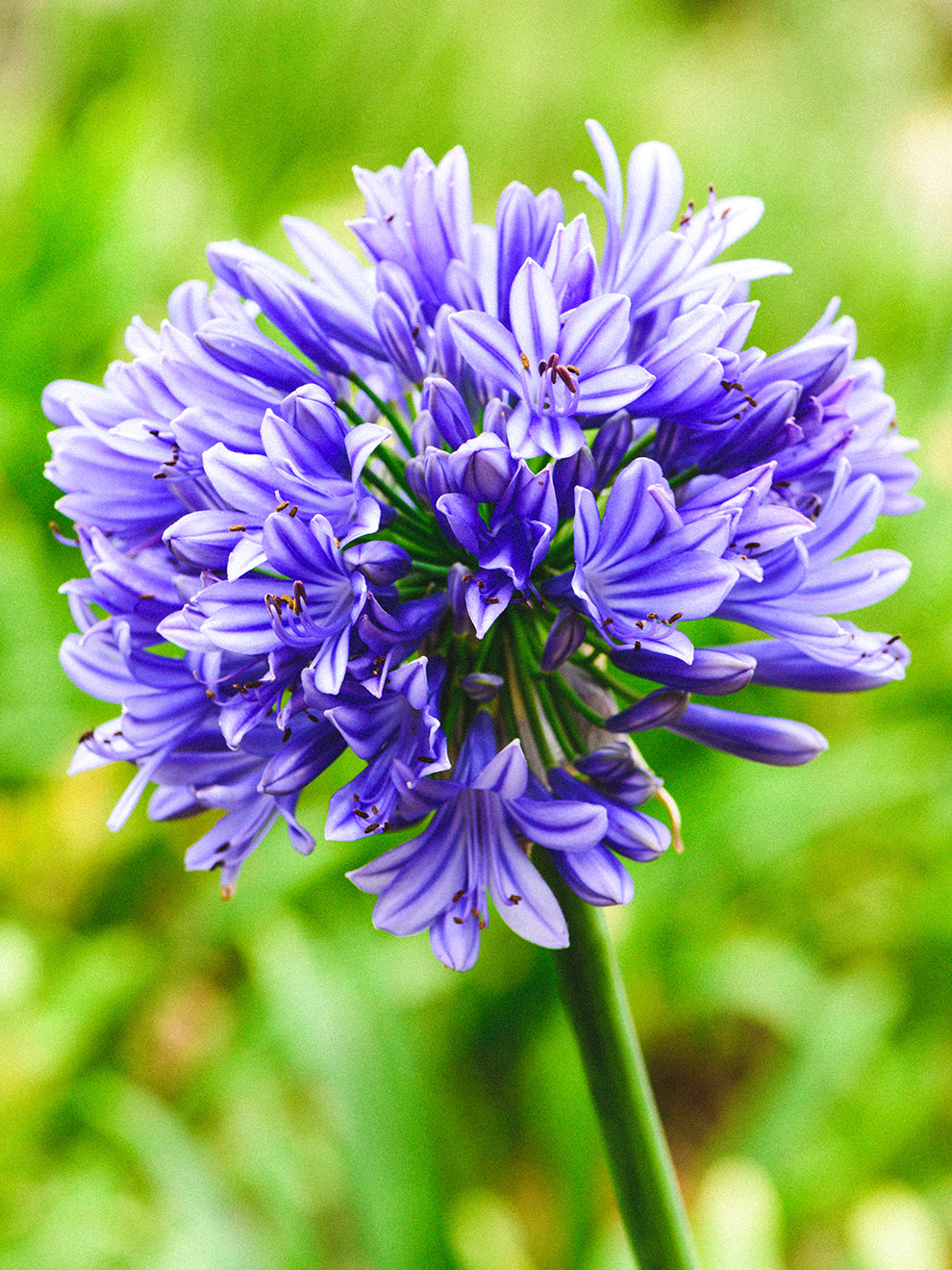Agapanthus Treatment Tips for Lush and Vibrant Flowers
Wiki Article
Understanding the Art of Agapanthus Care: Essential Actions for Healthy And Balanced Growth and Dynamic Flowers
In the realm of horticulture, the cultivation of agapanthus stands as a satisfying venture for those who look for to support these sophisticated flowering plants. With their striking flowers and elegant foliage, agapanthus has caught the focus of gardeners worldwide. Nonetheless, accomplishing optimal growth and vivid blossoms needs a nuanced method that includes numerous important steps. From choosing the appropriate selection to grasping trimming techniques, the journey towards growing thriving agapanthus plants is diverse and holds the vital to opening the complete capacity of these herb treasures.
Choosing the Right Agapanthus Variety

When picking the right Agapanthus selection for your yard, take into consideration aspects such as climate viability, blossom color, and development routine. Additionally, take into consideration the climate in your area to make sure the Agapanthus range you pick can flourish in your specific problems. Comprehending the growth behavior of various Agapanthus varieties is essential for proper placement within your yard.
Suitable Growing Problems
Considering the ideal environmental requirements is crucial for effective Agapanthus farming. Agapanthus plants are sensitive to cool temperatures and ought to be shielded from frost during winter months.To make certain healthy and balanced development and vibrant blossoms, plant Agapanthus light bulbs at a deepness of regarding 2-4 inches and space them 8-12 inches apart. Adding raw material, such as compost, to the dirt can improve drain and fertility, advertising durable root advancement. Mulching around the base of the plants aids maintain moisture and reduces weed development. Normal watering is crucial, specifically during the growing season, to maintain the soil continually wet yet not saturated.
Watering and Fertilizing Tips
Maintaining correct dampness degrees and giving necessary nutrients are crucial elements in the treatment program for Agapanthus plants. It is essential to strike a balance when it comes to sprinkling Agapanthus. If overwatered, these plants like continually wet soil yet are vulnerable to root rot. Throughout the expanding season, water deeply when a week, guaranteeing the dirt is well-draining to stop waterlogging. In hotter climates or throughout periods of dry spell, even more constant watering might be needed to keep the soil evenly damp. Nevertheless, minimize watering in the winter to avoid water logged conditions.Feeding Agapanthus is vital for promoting healthy and balanced development and respected flowers. Use a balanced plant food, such as a 10-10-10 formula, in the early spring as brand-new development emerges. Repeat this application every 6-8 weeks throughout the growing season. Stay clear of extreme fertilization, as it can cause lavish vegetation at the expense of blooms. Always adhere to the manufacturer's directions for correct dilution and application techniques. By complying with these watering and fertilizing tips, you can guarantee your Agapanthus plants flourish and generate lively, long-lasting blossoms.
Pruning Techniques for Agapanthus
Pruning Agapanthus plants at the ideal times and with correct methods is crucial for keeping their health and advertising ideal development and blooming. The perfect time to trim Agapanthus is in late wintertime or early spring before new growth emerges.Deadheading invested blossoms can additionally redirect the plant's energy into generating even more flowers instead than establishing seeds. If you want to gather seeds for breeding, leave some blossoms to fully grown and dry on the plant.
Remember to use clean, sharp devices to make precise cuts and lower the danger of introducing conditions. Agapanthus. Routine trimming will help maintain your Agapanthus looking healthy and neat while making certain a bountiful screen of gorgeous flowers
Dealing With Typical Bugs and Diseases
After ensuring correct pruning methods for Agapanthus, it is important to attend to usual bugs and diseases that can affect the health and wellness and vigor of these plants. Agapanthus plants are typically durable but can still come down with specific concerns. One common insect that affects Source Agapanthus is the Agapanthus gall midge. This tiny, orange fly lays its eggs in the foliage, causing distorted growth and blossom buds that fail to open up. To combat this bug, trim and damage any type of damaged plant parts and consider using insecticidal soap.In addition, Agapanthus plants can suffer from root rot if they are grown in badly draining pipes dirt. By being watchful and taking timely action against diseases and pests, you can help your Agapanthus Find Out More plants flourish and produce vivid flowers. Agapanthus.

Verdict
Finally, understanding the art of agapanthus treatment includes selecting the appropriate selection, supplying optimal planting problems, appropriate watering and feeding, proper pruning techniques, and resolving typical parasites and diseases. By adhering to these essential steps, you can guarantee healthy growth and vivid flowers for your agapanthus plants. Bear in mind to routinely keep an eye More Help on and preserve your plants to promote their overall well-being and long life.To guarantee healthy and balanced growth and lively blooms, plant Agapanthus light bulbs at a depth of about 2-4 inches and space them 8-12 inches apart. By adhering to these watering and fertilizing suggestions, you can ensure your Agapanthus plants flourish and generate vibrant, long-lasting blossoms.
One typical parasite that affects Agapanthus is the Agapanthus gall midge. Additionally, Agapanthus plants can endure from origin rot if they are grown in improperly draining pipes soil. By adhering to these vital steps, you can ensure healthy development and dynamic blooms for your agapanthus plants.
Report this wiki page